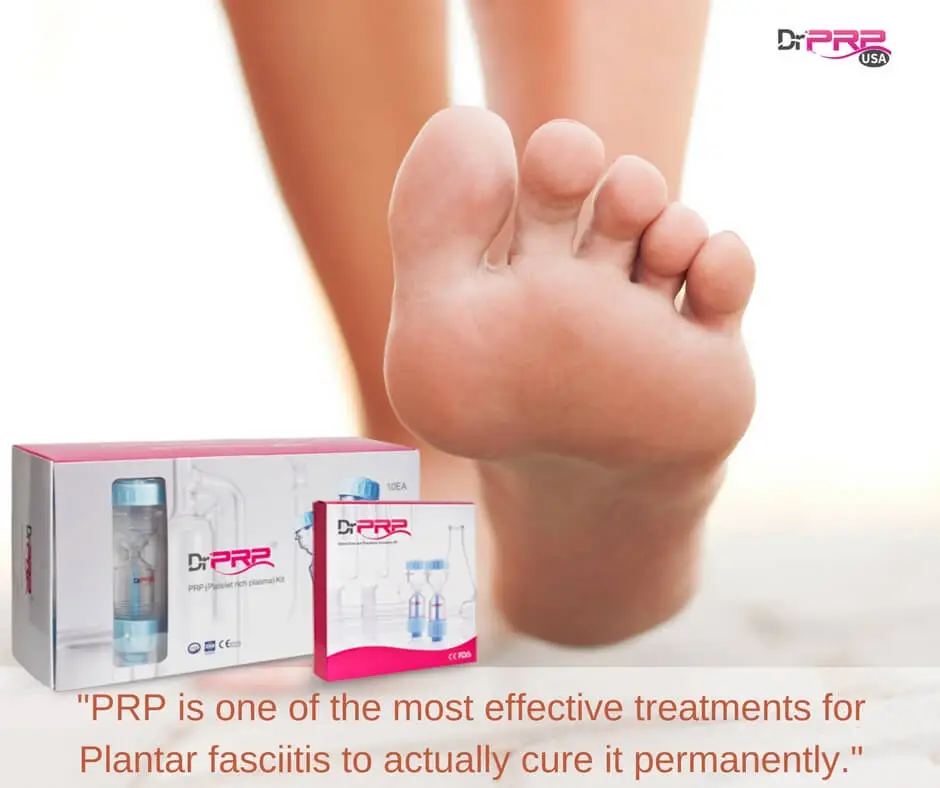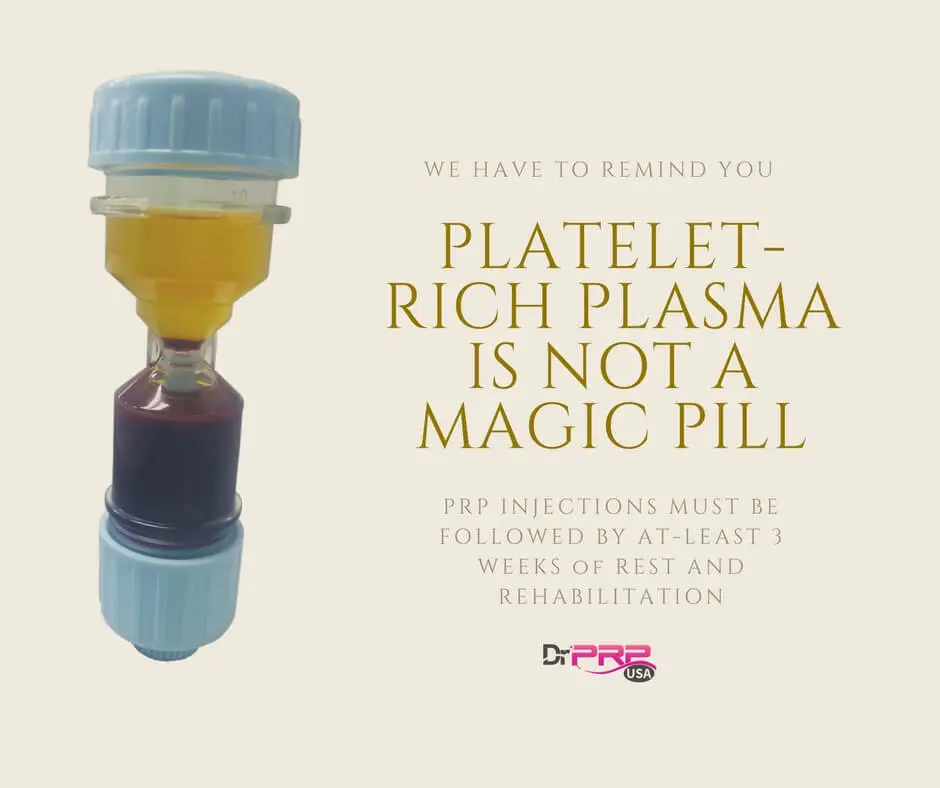| Item | Price | Qty | Total | |
|---|---|---|---|---|
 Loading Cart...
Loading Cart...Foot And Ankle Surgeon’s Guide To Platelet-Rich Plasma

Some believe that Platelet-Rich Plasma is nothing but a new-age medical nonsense that preys on the gullible. And let me the first to admit that there are some carefully controlled studies out there showing that PRP Injections work no better than a placebo. But there are also thousands of doctors who swear by the efficacy of Platelet-Rich Plasma which seems to do a better job at healing patients, and at a much lower cost, than traditional medicine.
This trend is only growing.
What does these doctors see that escapes medical establishments’ eyes?
One branch of medicine where it is particularly evident is Podiatry. We believe that Platelet-Rich Plasma is not as widely accepted in Podiatry as it should have. Making it the first line treatment for pain in the foot and ankle treatments will help orthopedic surgeons to reduce complication rates, achieve favorable clinical outcomes faster, and improve patient satisfaction.
Here are some of the cases where a Foot and Ankle Surgeon might use PRP or PRFM (Platelet-Rich Fibrin Matrix).
1. Plantar fasciitis/fasciosis
It’s widely accepted that Platelet-Rich Plasma Injection has become a very common treatment for Plantar Fasciitis. Studies like this prove it’s efficacy. In the words of Dr. Daniel Kassicieh, D.O., FAAN, FACN, of Sarasota Neurology, PRP seems to be “one of the most effective treatments for Plantar fasciitis to actually cure it permanently.” He says many of his patients have avoided surgery with a single Platelet-Rich Plasma injection – no rehab, no down time, and certainly no unwanted consequences of surgery to deal with. That explains why Plantar Fasciitis has been the 5th popular musculoskeletal condition (the first four are knee meniscus, shoulder, shoulder rotator cuff and tennis elbow in that order) treated by Platelet-Rich Plasma. Part of the reason is that over 3 million people are diagnosed with this condition and we’ve not found a viable treatment for it yet.

2. Achilles tendonitis/tendinosis
Achilles tendinopathy is a another difficult to treat condition which is progressive and often results in tendon rupture. Surgical approaches, either tendon debridement or tendon transfer, are risky and does not end up with predictable results. Patients are usually given corticosteroid injections to reduce pain. But studies like this have shown that Platelet-Rich Plasma is a much more helpful treatment than corticosteroids. Another study released by European Foot and Ankle Society revealed that a single PRP injection can be a safe and attractive alternative for the treatment of non-insertional CRATs than anything else available today.

3. Diabetic Foot Ulcers
Non-healing diabetic foot ulcers are a major problem for diabetics and in the US, there are over 2.5 million people affected. Eleven percent of them may go on to have lower extremity amputation. That’s not pretty. But according to this study, just a single injection and a bi-weekly topical application of Platelet-Rich Plasma turned around the chronic non-healing ulcers of 24 patients in just 8.2 weeks. In another study, the effects of topical application of Platelet-Rich Plasma was compared with Anti-septic creams for clean diabetic foot ulcers and PRP was proved to be more effective.
Platelet-Rich Fibrin Matrix, derived from Platelet-Rich Plasma, is also another excellent candidate (as demonstrated in this study) for diabetic foot ulcer.
4. Bone regeneration
Foot and ankle is one of the most common areas where bone regeneration is needed. Though nothing trumps mechanical stabilization, researchers are now surprised by the role of Platelet-Rich Plasma.

PRP assists bone and soft-tissue healing by providing platelets and thus growth factors at the site of damage. The phenomenon was studied recently, where they conducted a systematic review of all the 64 independent articles that discussed PRP’s role in bone tissue regeneration. This study calls for further optimization of the PRP treatment.
Nevertheless, the science for using Platelet-Rich Plasma for bone regeneration is solid. In order for bone or tissue to form, three key components are required at the surgical site. These three components are:
- A scaffold for cellular growth and attachment
- Biological stimulants that provide signaling proteins to recruit cells
- Undifferentiated stem cells that provide osteogenic potential
The combination and synergy of these three key components is critical to bone formation. Platelet-Rich Plasma can provide two of three of these components — a scaffold and a biological stimulant. Hence there is no reason why we should not use it for assisting bone regeneration.

5. Ankle Sprains
This is a fairly common condition among both professional athletes and weekend warriors. An ankle sprain can be a stretch, tear or a complete rupture of the ligaments in the ankle. In any of these cases, Platelet-Rich Plasma can be very effective in accelerating the healing process. In one of the randomized controlled studies, researchers analyzed the effect of Ultrasound-guided Platelet-Rich Plasma injections on athletes with Syndesmotic or high-ankle sprains. Platelet-rich plasma was injected into the injured antero-inferior tibio-fibular ligaments (AITFL) and their Return to Play (RTP) time was measured. Not only was the Platelet-Rich Plasma group saved 20 days of healing time, they also experienced significantly less residual pain. Expert physicians tell us that Platelet-Rich Plasma can cut down the normal 6-week recovery period for a torn ligament from an ankle sprain to just 2-3 weeks. That’s a 50% reduction in healing time.
Immobilization The Key In Successful Platelet-Rich Plasma Treatments?
One of the missing pieces when it comes to Foot and Ankle related injuries, is Rest and Rehabilitation. With or without Platelet-Rich Plasma, there is no avoidance of Rehab. And we found that some of the studies that disprove Platelet-Rich Plasma for Foot and Ankle Injuries were done without Rest and Rehabilitation – meaning they were testing whether Platelet-Rich Plasma is a stand-alone “magic pill.”
We can assure you that Platelet-Rich Plasma is not a magic pill. And that there is no avoidance of Rest and Rehabilitation. The Platelet-Rich Plasma injection must be followed by a standardized rehabilitation protocol – which, depending on the severity, can include full weight-bearing in a splint, pneumatic boot, or cast for a 2-3 weeks.

What’s Feeding The Resistance For PRP Adoption?
We believe the biggest hindrance is the current system of healthcare. The big-pharma-dominated healthcare in the US would be more than happy to spend almost $2 trillion for chronic diseases than educate doctors on the advantages of alternative, autologous and integrative interventions such as Platelet-Rich Plasma. Studies after studies have shown that the earlier you introduce Platelet-Rich Plasma, the more results the patients end up getting. Yet, we’re in a system that encourages all kinds of short-term-results-oriented treatments before considering Platelet-Rich Plasma because it’s “expensive” and not reimbursed by insurance companies.
How Foot And Ankle Surgeons Can Benefit
The use of PRP in the foot and ankle is here to stay. So get involved with Platelet-Rich Plasma as soon as possible. Try it out with your patients. Play with the Platelet-Rich Fibrin Matrix. And before prescribing conventional drugs and surgeries, give your patients an opportunity to try Platelet-Rich Plasma at a low cost. We know how thankful your patients are going to be.
For more info on various protocols for PRP Injections, reach out to us at (844) 377-7787 .



